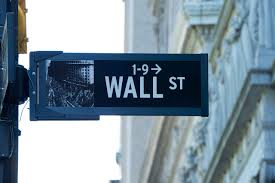
By Howard Schneider, Reuters—
Federal Reserve officials are playing it cool for now, but roughly $2.5 trillion of stock market value wiped out in the past three weeks and a possible consumer pullback could throw the Fed off its course of gradual interest rate hikes.
Policymakers continue to argue that the threat will pass, but the risk that the selloff will hit the main engine of U.S. economic growth – household spending – gets bigger the longer markets remain depressed.
Fed research and other studies estimate that up to 6 percent of any drop in household net worth gets passed through and results in less spending. It means that unless the market recovers soon, upwards of $150 billion in consumption will be lost in coming months – a drag of close to 1 percent of gross domestic product.
Fed policymakers meet on Tuesday and Wednesday for the first time since raising interest rates in December. While no move is expected, investors will parse their statement to see how recent events have influenced the central bank’s outlook.
Since its last meeting, oil prices have plumbed new multi-year lows, worries about China’s growth have roiled stock markets, and Fed officials have voiced concerns that a recent drop in U.S. inflation expectations could mark a dent in household and business confidence. (Graphic: tmsnrt.rs/1Rm63eO)
Central bankers typically discount market swings as largely irrelevant to monetary policy, unless they become big enough to impact business investment, hiring or household spending.
Outside analysis and a Reuters review of data suggest this could be such a case, given how wealth effects of the market slide, if sustained over time, could erode a large chunk of the economic growth now expected by the Fed.
In addition, other indicators of consumer spending habits have begun to flatline or suggest households may tighten their purse strings. (Graphic: tmsnrt.rs/1lCCjfM)
The personal savings rate ticked higher through late last year to reach 5.6 percent of disposable income in November, up from the 4.8 percent average for 2013 and 2014. This could signal a return of consumer caution that characterized the subdued early stages of the recovery from the 2007-2009 recession when U.S. households focused on repairing their finances.
Retail sales fell in December, the peak of the Christmas shopping season, contributing to disappointing results at Macy’s (M.N) and followed shortly by Wal-Mart’s (WMT.N) announced plan to close more than 150 U.S. stores.
GATHERING CLOUDS
Owners’ equity in real estate, which surged in recent years as housing prices recovered after the recession, stalled through the first nine months of last year at around 56 percent of mortgage debt.
Household net worth as a multiple of disposable income, had by last year recovered from the financial crisis thanks to rising home and stock prices, but growth stagnated throughout 2015. Both measures are important proxies for consumption as they improve access to credit, bolster confidence and make households more ready to spend.
“When you put it all together, if equities keep softening and you get rising savings and if consumer confidence starts to decline you have a narrative that points in the same direction of maybe less consumption growth,” said Ben Herzon, senior economist with the Macroeconomic Advisers consulting firm.
The consultancy is forecasting 2.5 percent U.S. growth for this year, just above the Fed’s base forecast of 2.4 percent. It plans, however, to update that after weighing the impact of the stock market slide against positives, such as continued employment growth and expected wage increases, and the boost to households provided by cheap energy.
Atlanta Federal Reserve President Dennis Lockhart earlier this month said the latest market rout so far reminded him of several turbulent weeks in August that passed with little lasting impact.
In fact, by the end of last week oil prices had crept back above $30 a barrel and stocks had recouped some of their losses. But if that proves to be a brief and the slump continues, it could do real damage.
Oxford Economics recently estimated that the 20 percent fall in world equity markets since May could leave U.S. GDP at the end of next year nearly 2 percent lower than it would otherwise be, erasing nearly half of the growth anticipated in the Fed’s baseline forecast.
Fed policymakers view continued improvements in the U.S. jobs market as such an important driver of economic growth that none of the recent developments on their own are likely to change the Fed’s 2016 outlook, just yet.
The Fed also does not seem ready to scale down its plans to move further away from zero interest rates, with a possible second rate increase in March or April, and as many as three more before year’s end.
But the risks to that outlook are rising. Investors have already pushed their expectations for a second rate rise deep into 2016, and Fed officials have begun to air their concerns about factors such as the recent drop in inflation expectations.
Steady or rising inflation expectations are central to the Fed’s confidence in its outlook. Policymakers worry that losing that “anchor” could lead households and businesses to retrench, trapping the economy in low gear.
Japan has spent years unsuccessfully battling such a deflationary mindset, leaving its central bank stuck with the zero rates and money printing policies that the Fed is trying to leave behind.
If the steady drumbeat of bad news about the markets and the global economy continues, it could force the U.S. central bank to rewrite its plan for more rate hikes this year, according to analysts and recent comments by Fed officials.
“A strong consumer should be enough to keep U.S. growth in positive territory, but with numerous headwinds, the risks to this view seem skewed to the downside,” analysts at Credit Suisse said in a recent report. “Events of the past few weeks suggest a darkening situation.”
(Reporting by Howard Schneider)

Leave A Comment
You must be logged in to post a comment.